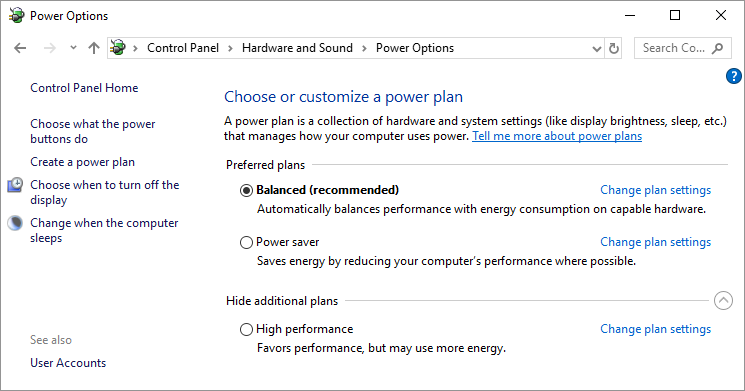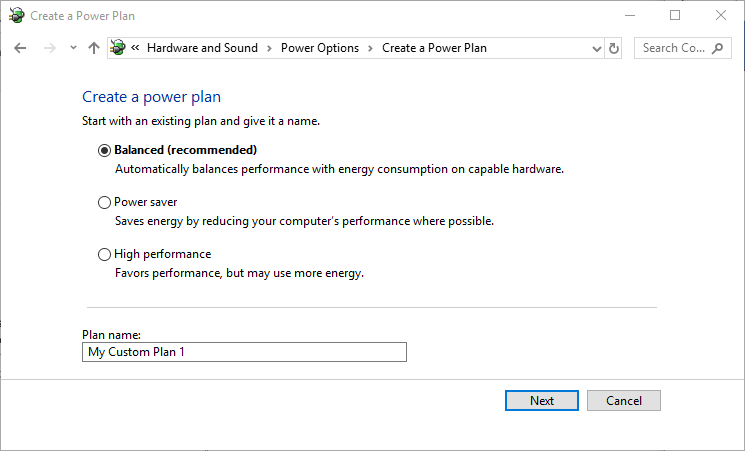Creating a Custom Power Management Plan
Written by Allen Wyatt (last updated February 11, 2019)
Most modern computers allow Windows to control both the computer itself (including the hard drive) and the display monitor. These components can be set to automatically "turn off" after varying amounts of inactivity. If the pre-defined power management plans in Windows don't meet your needs, you can create your own custom plan. Follow these steps:
- Display the Control Panel.
- At the left side of the screen click the Hardware and Sound heading. Windows displays the Hardware and Sound screen.
- Under the category of Power Options, click the Change Power-Saving Settings option. Windows displays the Power Options screen. (See Figure 1.)

Figure 1. The Power Options screen.
- At the left side of the screen click Create a Power Plan. Windows displays the Create a Power Plan screen. (See Figure 2.)

Figure 2. The Create a Power Plan screen.
- Pick one of the existing power management plans (Balanced, Power Saver, or High Performance) as the starting point for your new power plan.
- Specify a name for your power plan.
- Click Next. Windows displays the Edit Plan Settings screen. (See Figure 3.)

Figure 3. The Edit Plan Settings screen.
- Use the controls on the screen to specify when Windows should turn off the display and put the computer to sleep. (Remember that the times represent periods of activity, so 10 minutes means that the device is turned off when you stop using the computer for 10 minutes.)
- Click Create.
Author Bio
Allen Wyatt
With more than 50 non-fiction books and numerous magazine articles to his credit, Allen Wyatt is an internationally recognized author. He is president of Sharon Parq Associates, a computer and publishing services company. Learn more about Allen...
Formatting Fractions
Need to have a great looking fraction in a document? It's relatively easy to do if you apply the formatting techniques ...
Discover More
The Last Business Day
Many businesses need to know when the last business day of the month occurs. This tip discusses several ways you can ...
Discover More
Running Macros on Hidden Worksheets
Excel allows you to hide worksheets so that they aren't visible to those using your workbook. Hiding worksheets has a ...
Discover More
Checking for Faulty RAM
Although it's rare for RAM to go bad, it does happen. This tip tells you how to check for faulty RAM by using the Windows ...
Discover More
Using Powercfg to Duplicate an Existing Power Scheme
The Powercfg utility allows you to control how power is used on your system. This tip shows you how to use the ...
Discover More
Wiping a Drive
Want to easily improve the security of your old data? Here's an addition to the venerable format command that can help.
Discover More



![]()
![]()
![]() This tip (10717) applies to Windows 7, 8, and 10.
This tip (10717) applies to Windows 7, 8, and 10.
Comments